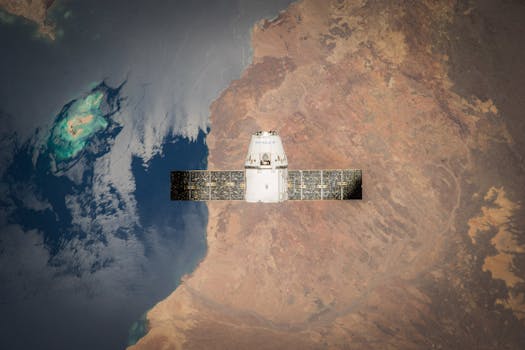Orbiting Innovations: Exploring the Latest in Earth-Observing Technology
The latest advancements in Earth-observing technology are revolutionizing the way we understand our planet. With the help of satellite imagery and remote sensing, scientists and researchers can now monitor and analyze various aspects of the Earth’s environment, from climate change to natural disasters.

Orbiting Innovations: Exploring the Latest in Earth-Observing Technology
Orbiting Innovations: Exploring the Latest in Earth-Observing Technology is a rapidly evolving field that has been transforming the way we comprehend our planet. The latest advancements in Earth-observing technology are revolutionizing the way we understand our planet. With the help of satellite imagery and remote sensing, scientists and researchers can now monitor and analyze various aspects of the Earth’s environment, from climate change to natural disasters. The use of Earth-observing technology has become increasingly important in recent years, as it provides valuable insights into the health of our planet and helps us to better understand the impact of human activities on the environment.
The development of Earth-observing technology has been driven by advances in satellite technology, sensor design, and data processing. Satellites in orbit around the Earth can collect vast amounts of data on various aspects of the environment, including temperature, humidity, and atmospheric composition. This data can be used to monitor climate change, track weather patterns, and predict natural disasters such as hurricanes and earthquakes. Remote sensing technology, which uses sensors to collect data on the environment without physical contact, has also become a crucial tool in Earth observation. Remote sensing can be used to monitor land use, track deforestation, and detect changes in ocean currents and temperature.
Applications of Earth-Observing Technology
Earth-observing technology has a wide range of applications, from environmental monitoring to natural resource management. One of the most significant applications of Earth-observing technology is in the field of climate change research. Satellites can collect data on temperature, sea level rise, and ice sheet melting, which can be used to monitor the impacts of climate change and predict future changes. Earth-observing technology is also used in weather forecasting, where satellites can collect data on atmospheric conditions, such as cloud cover and precipitation. This data can be used to predict weather patterns and issue warnings for severe weather events.
Another significant application of Earth-observing technology is in the field of natural resource management. Satellites can collect data on land use, deforestation, and water quality, which can be used to monitor the health of ecosystems and track changes in land use. Earth-observing technology is also used in disaster response and recovery, where satellites can collect data on damage and provide critical information for emergency responders. The use of Earth-observing technology has also become increasingly important in the field of agriculture, where satellites can collect data on crop health, soil moisture, and weather patterns. This data can be used to optimize crop yields, reduce water usage, and predict disease outbreaks.
Future Developments in Earth-Observing Technology
The future of Earth-observing technology is exciting and rapidly evolving. Advances in satellite technology, sensor design, and data processing are expected to continue to improve the resolution and accuracy of Earth-observing data. The development of new satellite constellations, such as the European Space Agency’s Copernicus program, will provide unprecedented amounts of data on the environment. The use of artificial intelligence and machine learning algorithms will also become increasingly important in Earth observation, as they can be used to analyze large datasets and identify patterns and trends.
The integration of Earth-observing technology with other technologies, such as the Internet of Things (IoT) and cloud computing, will also become increasingly important. The use of IoT sensors and devices will provide real-time data on the environment, which can be used to monitor and respond to changes in the environment. Cloud computing will provide the processing power and storage needed to analyze large datasets and provide critical information to decision-makers. The development of new applications and services, such as Earth-observing platforms and data marketplaces, will also become increasingly important, as they will provide users with access to Earth-observing data and analytics.
Conclusion
In conclusion, Orbiting Innovations: Exploring the Latest in Earth-Observing Technology is a rapidly evolving field that is transforming the way we understand our planet. The use of Earth-observing technology has become increasingly important in recent years, as it provides valuable insights into the health of our planet and helps us to better understand the impact of human activities on the environment. The future of Earth-observing technology is exciting and rapidly evolving, with advances in satellite technology, sensor design, and data processing expected to continue to improve the resolution and accuracy of Earth-observing data. As the field of Earth-observing technology continues to evolve, it is likely to play an increasingly important role in addressing some of the most pressing environmental challenges facing our planet.

